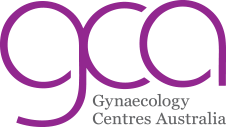The new HPV vaccine is available in Australia as part of the National Immunisation Program (NIP). The new nonavalent human papillomavirus is available as a two-dose schedule and replaces the old three-dose quadrivalent vaccine.
Parents of girls and boys in the 12-13 age bracket will now be able to consider giving consent for their children to receive the vaccine as part of the school-based program. The NIP is also funding a catch-up program for ages up to 19 years, which has been ongoing since July 2017.
What Does the New Vaccine Protect Against?
The new vaccine contains many of the same virus-like particles as the previous version such as types 6 and 11 to protect against genital warts, and types 16 and 18, which are the most oncogenic (possessing tumour causing properties).
Five other oncogenic HPV types have been introduced to increase the range of the vaccine’s protection against the most commonly developing cervical cancers, which includes types 31, 33, 45, 52, and 58.
With the introduction of the new vaccine, protection against cervical cancers in Australia will increase from 70% to over 90%. Further to that, there is also a heightened benefit in protecting against other cancers related to HPV, as the majority of these are due to the HPV types 16 and 18.
An Effective and Safe Vaccine
Randomised trials in women who have never previously been infected have shown the vaccine to be very effective at preventing infection from high-grade diseases caused by HPV types 31, 33, 45, 52, and 58.
The new vaccine produces a higher number of reactions at the injection site, but only slightly higher than the quadrivalent vaccine. There are also fewer reactions in girls and boys than adult women. The number of systemic adverse events remains identical between both vaccines.
HPV vaccines have been in widespread use all over the world for more than a decade now, with over 270 million doses being administered. They continue to receive the green light from the World Health Organization (WHO), which considers them extremely safe.
A recommendation has been made for children under the age of 14 to receive two doses of the new HPV vaccine, with each dose administered 6 to 12 months apart from the first dose. Older individuals are still required to receive a total of three doses, as well as those who are immunocompromised.
If a person has already received their first dose, those who were under the age of 14 at the time of receiving it, and have had a second dose no less than six months apart will be considered to have received a complete course. Everybody else who does not fit within that group will need to undergo the three-dose treatment.
If a vaccination has already been administered, then revaccination is not recommended. This is because HPV provides powerful protection against HPV 16 and 18 types, and all three HPV vaccines provide significant protection against these types as well.
Research has discovered that 50% of all cancer-causing HPV infections have been caught by the age of 20. At 30 years of age, that number reaches 75%. The prevalence of these infections is the reason that cervical screening is also an important prevention strategy for women who are sexually active.
Patients who have previously received an HPV vaccination may opt in to receiving a second course of nonavalent HPV, which is not NIP funded. Anyone over the age of 15 will need to receive the 3-dose course.
If you have any questions about the new HPV vaccine, please don’t hesitate to call our clinic on 02 9585 9599 to find out more information, or contact us on our website at https://gcaus.com.au/contact-gca/.
